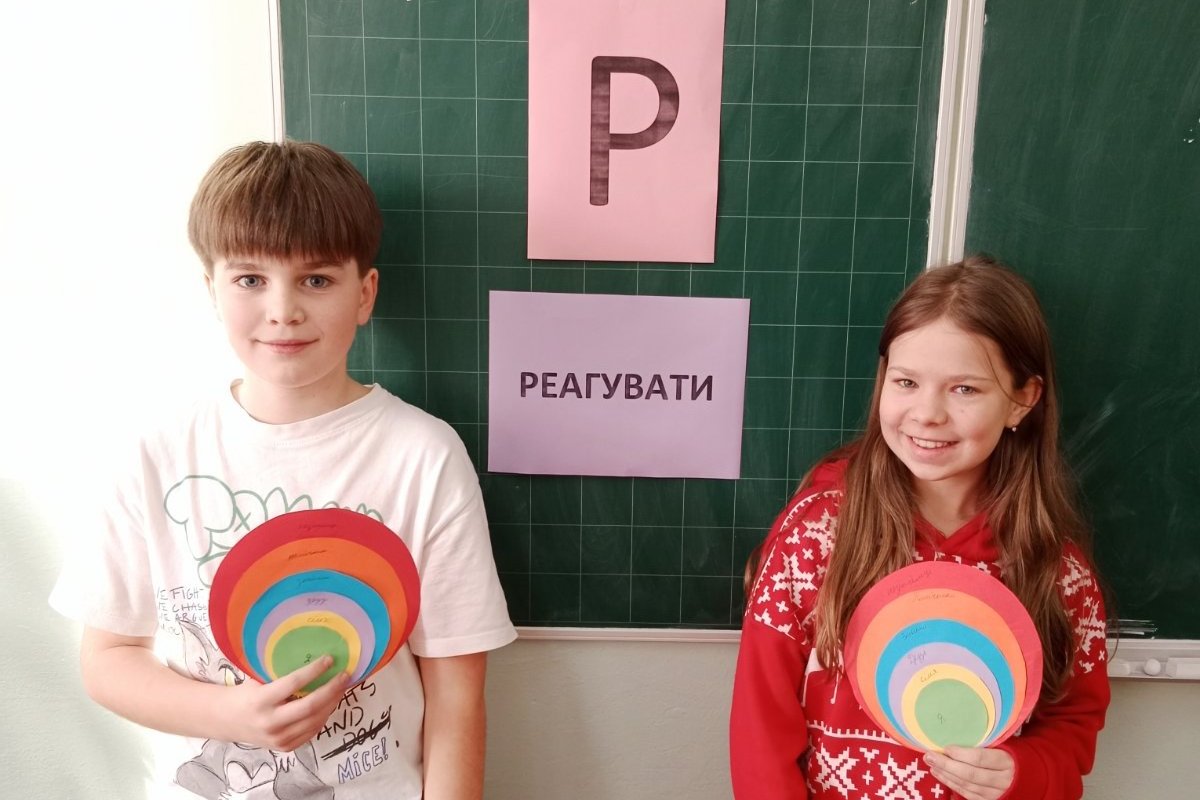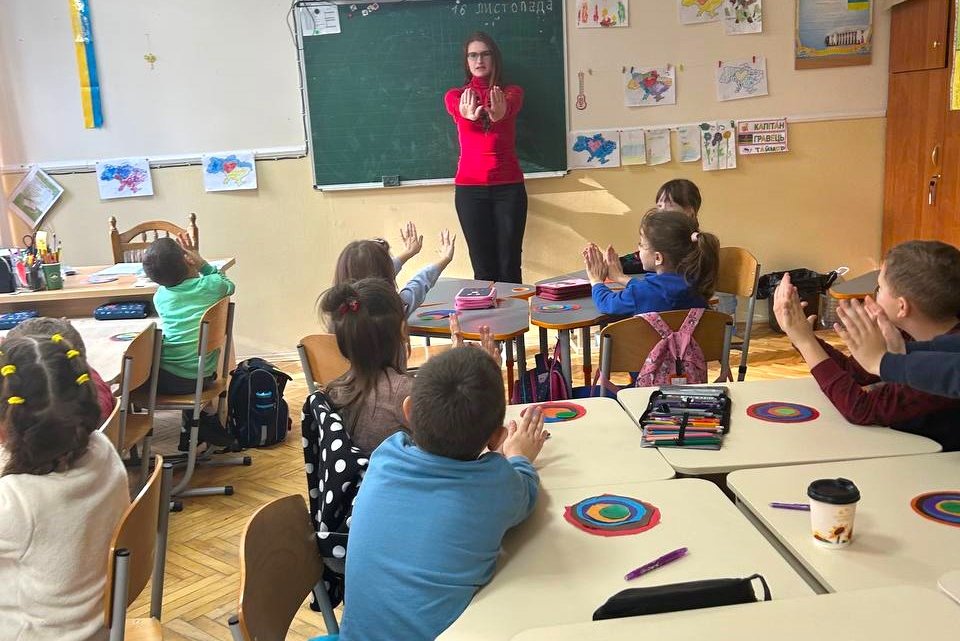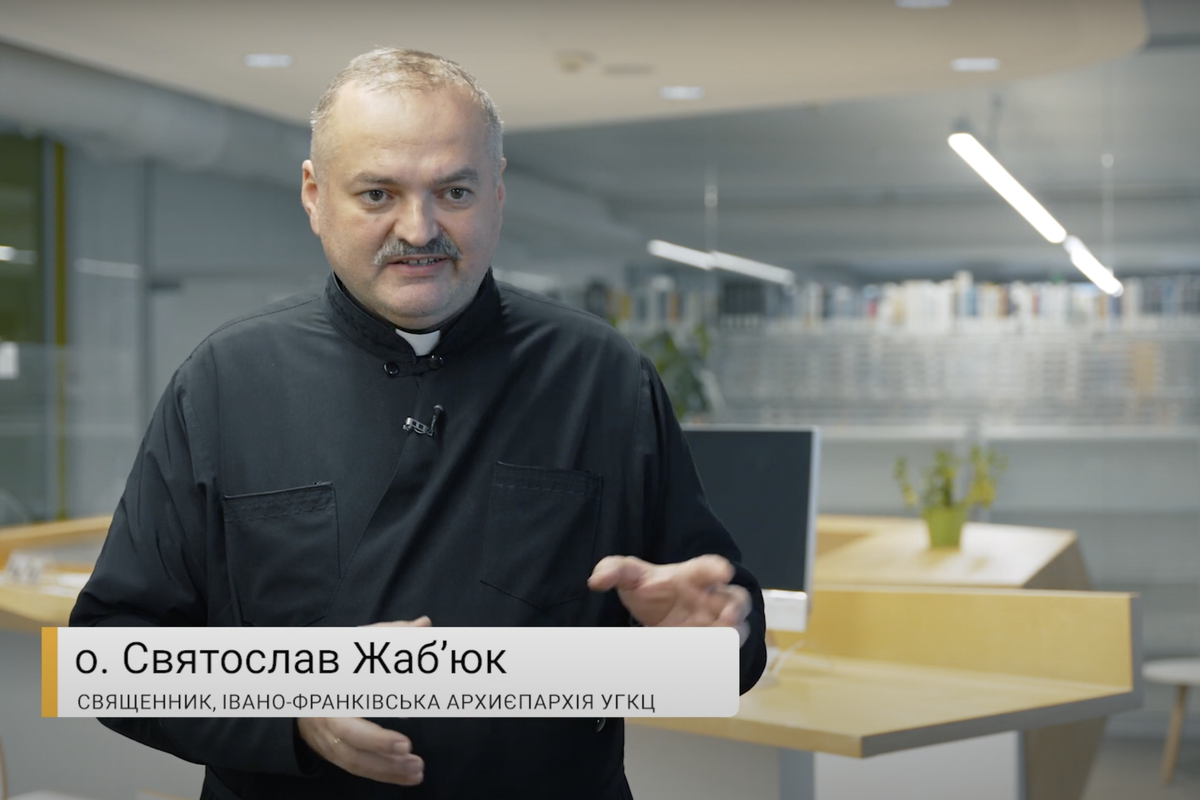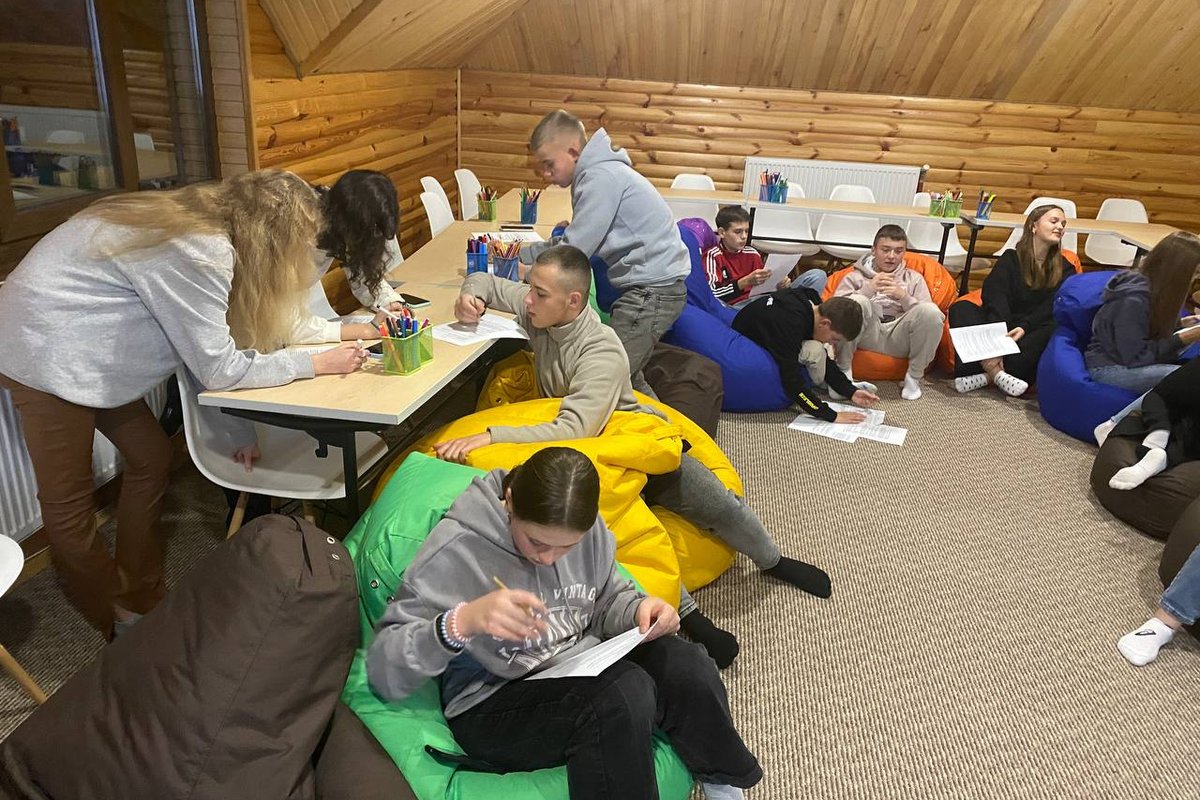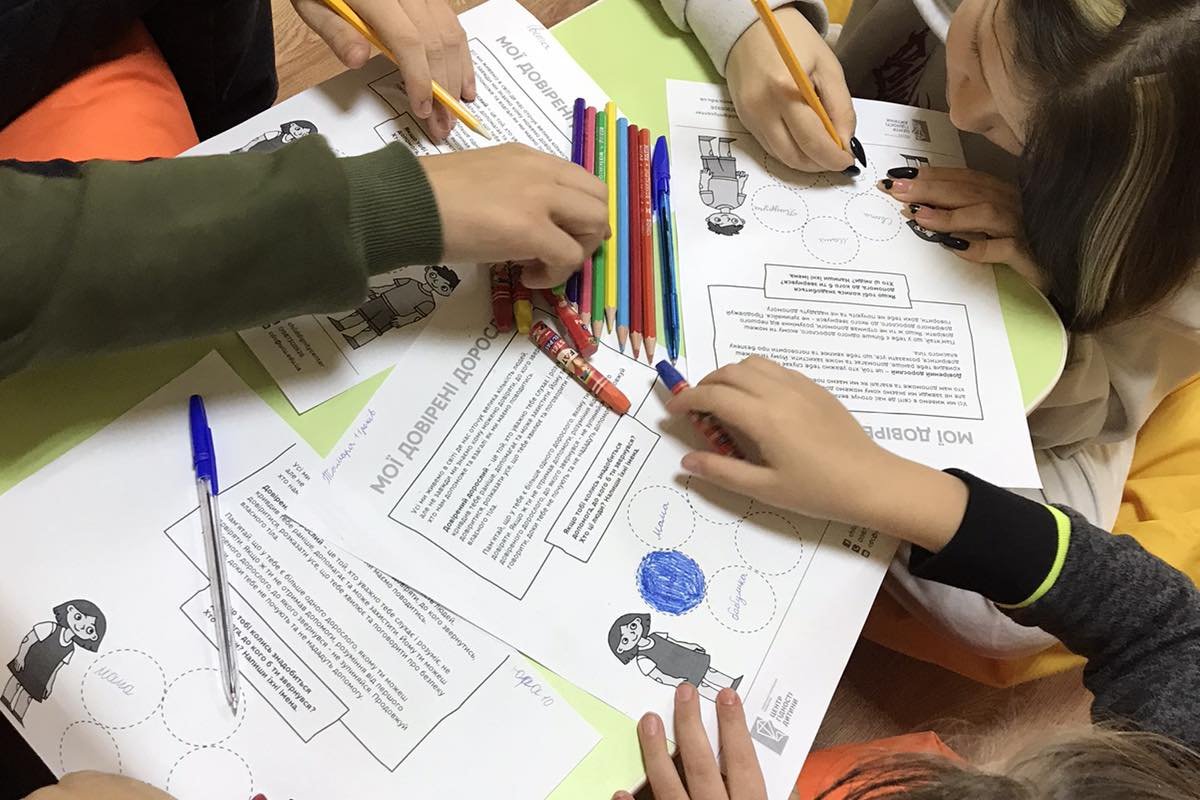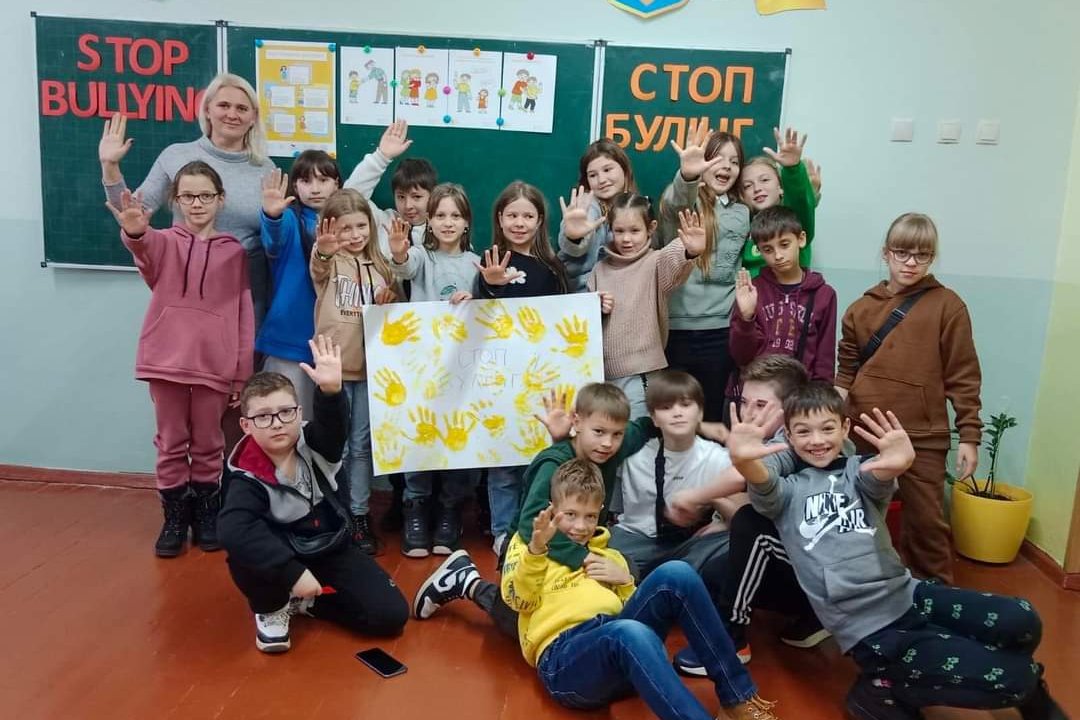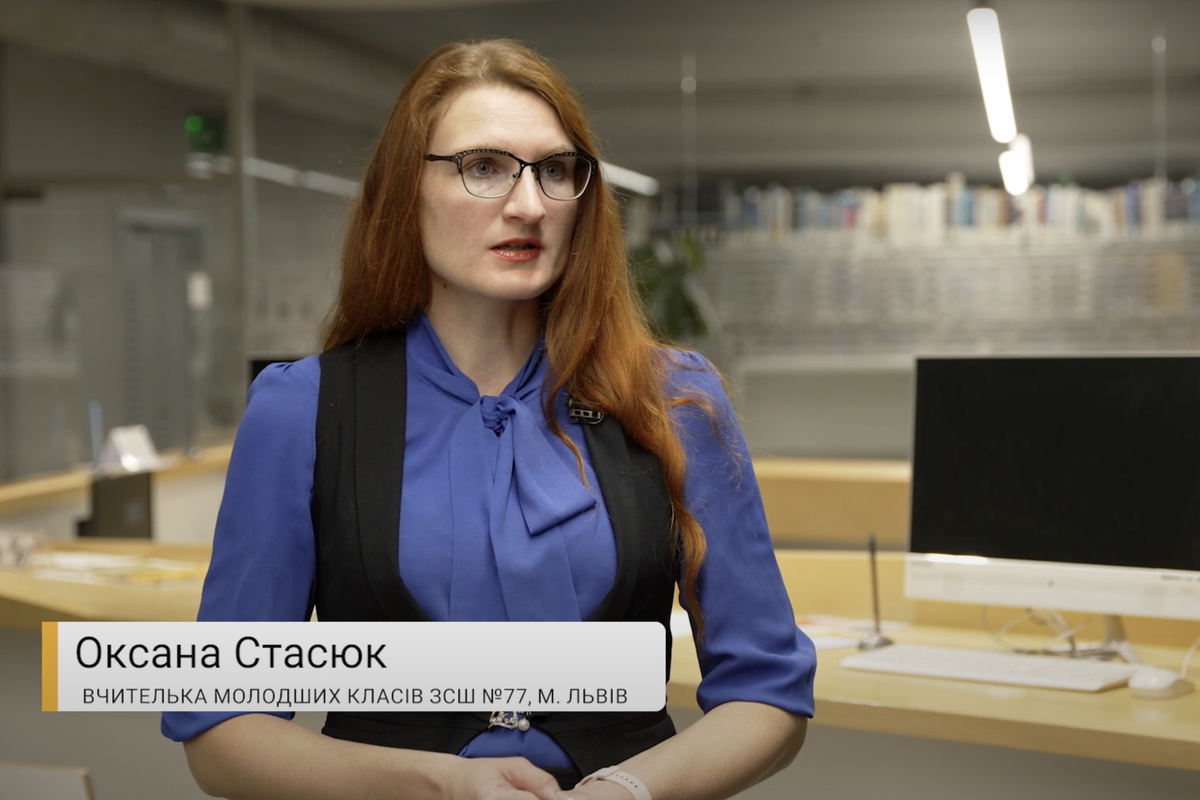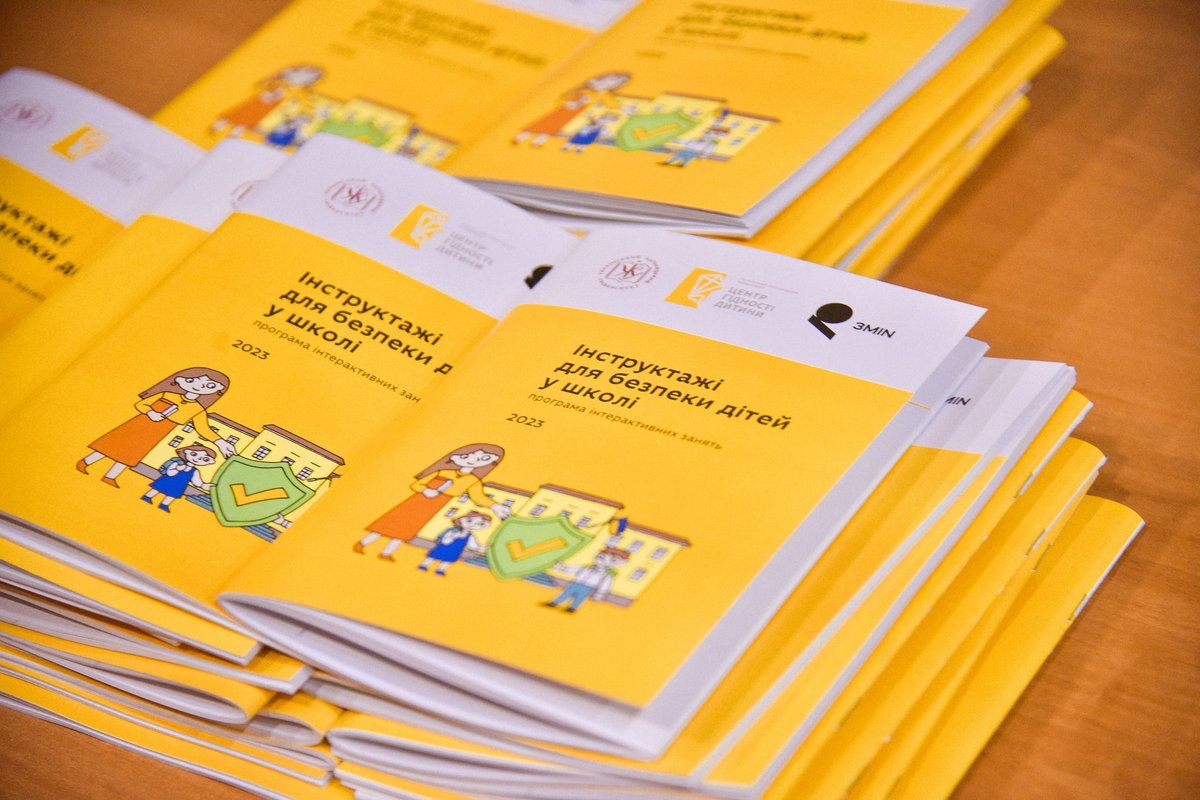"'Instructions for child safety' - tested!
UCU's Center for the Dignity of the Child has tested the manual "Instruction for Child Safety," which aims to teach children aged 4-18 safety rules to prevent possible sexual abuse, bullying, and cyberbullying. This is the first manual of its kind that can be used by professionals from educational and church environments.
What is the Child Safety Training Manual?
The manual contains a set of lessons for children of different age groups: 4-6, 7-10, 11-14, and 15-18 years old, with images, coloring pages, games, and qr codes for videos. They explain the basic safety rules that children need to know to prevent violence, such as the swimsuit rule (the parts of the body that are under the swimsuit are private, we do not show them), the rule of trustworthy adults (those who do not do harm and to whom the child can turn for help), avoidance of secrets (adults and children cannot have secrets about intimate parts of the body), which touches are safe and which are not, how to defend personal boundaries, say "no" to things that the child does not like, where and to whom to go if personal boundaries are violated, what bullying and cyberbullying are, and how to counteract these types of violence. The manual has two versions. For educators: teachers, school psychologists, social workers, and educators - "Briefings for the safety of children at school". For the church environment: catechists, priests, and all those who work with children in parishes - "Instruction for Child Safety."
How was the manual tested?
The topics covered in the manual are mostly new to the educational and church environment. So it was important to see how the material would be received by teachers and children. This was the purpose of testing the manuals - on the one hand, to get feedback from experience, and also to strengthen the specialists in the teaching process.
Training was organized for the specialists in several stages. First, there were two consultations before and during the classes, conducted by Anastasia Luzhetska, a teacher and author of the "Ptashenya. Children's Space". The expert explained how to conduct such classes with children of different ages and explained the practical exercises offered in the manual. Later, a webinar was held by a child psychiatrist, psychotherapist Yuliana Maslak, on how to respond to children's disclosure of sexual abuse and bullying: how to talk to victims and what the further algorithm of actions should be.
The direct testing of the training by specialists in two environments at once (education and church) took place in November 2023. Twenty-six teachers, school psychologists, and catechists volunteered for the program, and each of them conducted a series of four classes for more than 400 children in Lviv, Ivano-Frankivsk, Kyiv, Odesa, Cherkasy, and Chernivtsi regions.
Before the classes began, the experts conducted a preliminary survey to familiarize children with the following topics: body privacy, safe touch, who are trustworthy adults, what is bullying, and how to respond to dangers on the Internet. Later, we monitored how children perceived the materials, and after the classes, we conducted a final survey to measure the change in knowledge after the training.
To hear the experience of the piloting, what was the reaction of children, how they perceived the materials, what was new and what topics were a challenge, the Center for Child Dignity held 6 focus groups with specialists who led the classes, and also recorded interviews with individual participants.
What did the specialists who tested the lessons say about them?
All of the experts noted that the topics of the briefings provoked unexpected activity and interest among children. "The children really liked the topic 'How to protect yourself,'" says Yulia Yurkiv, a psychologist at school No. 77 with in-depth study of economics and management in Lviv. "When we were acting out scenes of dangerous situations where a stranger approaches a child and invites him to go to his house to look at a puppy, the children began to discuss similar situations of danger, asking: "What if there is no adult around to protect me?" They brainstormed with me, and I had to think about what to say."
80% of professionals indicated that in their groups, the topics of safe/dangerous touch, trusting adults, and the swimsuit rule were new to some children. This was also confirmed by a survey of children - the number of those who learned about this rule as a result of the training more than doubled.
Olena Modenova, a psychologist at the Center for Assistance to Victims of Domestic and/or Gender-Based Violence in Odesa, shared her experience: "Many of the children I had classes with did not know that the parts of the body under the swimsuit are private and no one has the right to touch them. We don't show them, we don't look at them in others. The children also thought that if they did not allow themselves to be hugged by relatives or family friends whose hugs they did not want, it was bad. After the classes, everyone knew about the swimsuit rule and understood that others could not touch their private parts or hug them without permission."
In fact, one of the questions in the pre- and post-surveys concerned situations when children were hugged or touched without permission by familiar adults - family friends or relatives. After the classes, the children's awareness of how to act in such situations, namely, to signal that they do not want a hug, almost doubled.
Sviatoslav Zhabyuk, a priest of the Ivano-Frankivsk Archeparchy of the UGCC, conducted classes for three groups of children in a local village school. He recounts: "I was surprised by a question from the children: "Why are you telling us this?" when we were discussing the topic of sexual violence. I explained that.
Five of the 26 professionals noted that after the sessions, children shared with them facts when adults touched them in an unpleasant way, but the children were afraid to say anything. In one case, sexual abuse was suspected. International practices show that as a result of educational work with children and adults on the topic of violence, victims can talk about their experiences for the first time. That is why it is important to know how to respond to such cases in a proper way so as not to destroy the child's trust.
Nadia Zhdan, a catechist from the Sokal-Zhovkva Eparchy of the UGCC, shared: "We had a question from 2-3 children: "What should we do if we cannot tell our parents about a situation of danger?" Because they tell us: "It's not a problem, you figure it out yourself." If parents say this, the child gets discouraged and doesn't know who to turn to next. The instructions contain a solution to help - to help form a circle of trusted adults. A child should have several adults whom he or she trusts and can turn to for help."
Information about bullying and cyberbullying (harassment on the Internet) proved to be relevant for many children, although some educational institutions conduct lessons on these topics. During the survey before and after classes, children were asked what to do if an online friend whom you have never met in person asks to send them your personal photos or videos. The rate of correct answers (that you shouldn't send anything) increased by 18% after the classes.
"Many children are on a first-name basis with understanding what bullying is," said Sofia Shevchuk, a teacher from Irpin who teaches classes at one of the parishes of the Kyiv Archeparchy of the UGCC. The children said during the classes: "If someone is bullying you, you have to step aside." And every time we emphasized that we need to stop the harassment with a strong voice, to say that I don't like what you are doing. At the same time, we learned a new word: "assertiveness," which means politely saying "no," not being rude, but still defending your own opinion. We reinforced this during each lesson. If at first the children were hesitant, then they could say "no" confidently and decisively."
Oksana Stasiuk, a junior high school teacher at School #77 with in-depth study of economics and management in Lviv, taught classes in five primary grades. She adds: "With the help of this manual, we, the teachers, learn how to talk about safety, privacy of our own bodies, trusting adults, and teach it to children. I believe that this manual should be tested and implemented in the school curriculum. After all, this information is not in school textbooks, but it is important and very necessary from a social and security point ofview."
Among the recommendations from those who tested the manual were suggestions for additional exercises, ideas on how to adapt the lessons for different age groups of children. Experts also recommended allocating more time for the lessons to discuss issues that children have in more detail. They identified topics that, in their opinion, also need to be addressed with children: classes on the basics of non-violent communication, on their bodies, their development and changes as they grow up, a sex education course, information hygiene on the Internet, and similar instructions for parents.
What conclusions can be drawn about the testing of the "Instruction for Child Safety"?
Khrystyna Shabat, head of UCU's Center for the Dignity of the Child: "The children were interested in the materials, all the experts noted this. They knew certain things, for example, about bullying, but the rule of the swimsuit and personal boundaries were new to many. This is a signal to us, adults, that such classes are necessary to teach children how to act in a way that takes care of their own safety, to form rules and algorithms that will prevent violence. Tolerating unpleasant touches or hugs from relatives is the first step towards normalizing violence. If parents do not understand, it is worth explaining to them that the child does not want to hug. In this way, children learn to talk about their feelings and needs, and to set boundaries. If the child turns to some adults and cannot resolve the issue, then they should turn to other adults who can help. In fact, in the briefings, we talk about a circle of trusted adults to whom a child can turn if he or she feels unsafe. We have created this manual with those who will be conducting the workshops in mind. It explains important things about a child's personal safety in clear language."
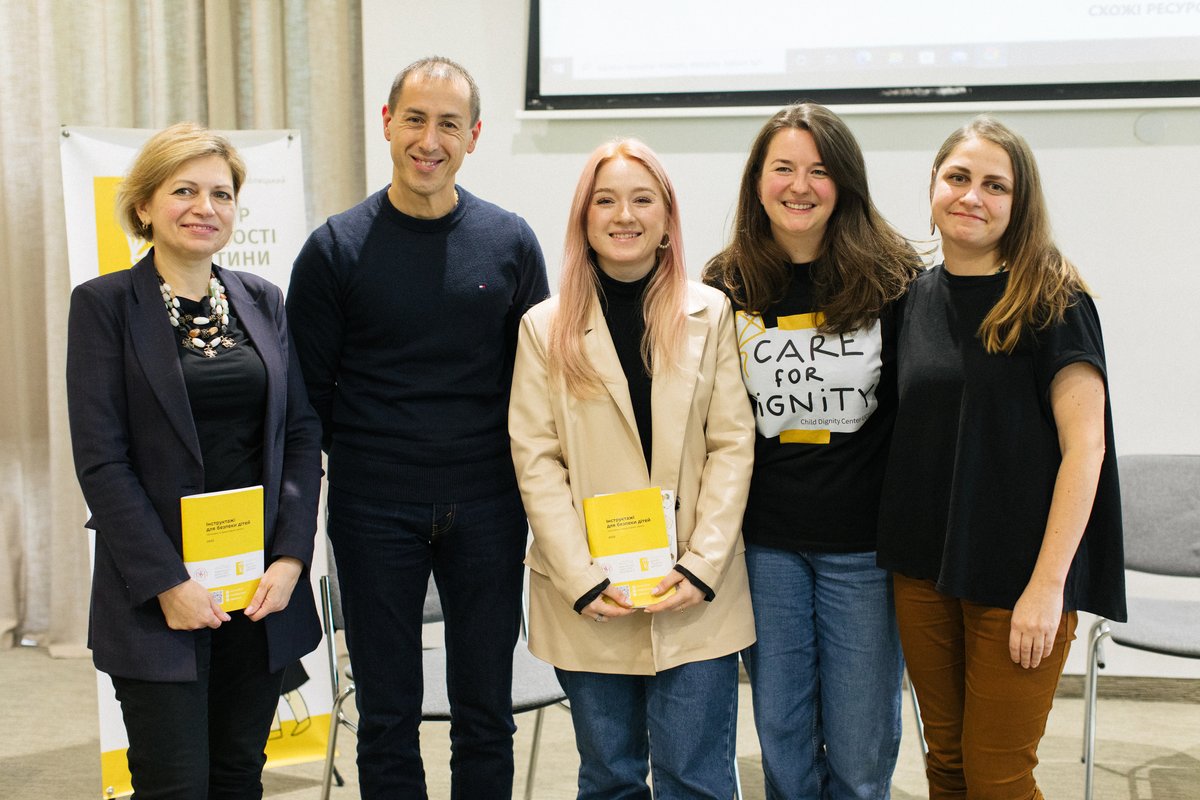
For reference: The testing of the manuals in the educational and church sectors was carried out as part of the project "Implementation of Instruction for Child Safety" with the support of the MediaN Foundation and the Lviv Education Department. The manuals were developed in cooperation with Ptashenya. Children's Space. The manual has two versions. For the educational environment, it is "Instructionfor Child Safety at School." For the church environment, it is "Briefingsfor Child Safety." There are also appendices to the manuals and a poster "My Safety Rules". The Center for Child Dignity has developed a free course that will be useful for all adults who interact with children: "Child Safety is an Adult Responsibility" and a free course for educators "Safeguarding. Child Safety in the Educational Environment". These are good tools to learn how to talk to children about important things: violence prevention, personal safety of children, trusting adults, how to counteract bullying and cyberbullying.
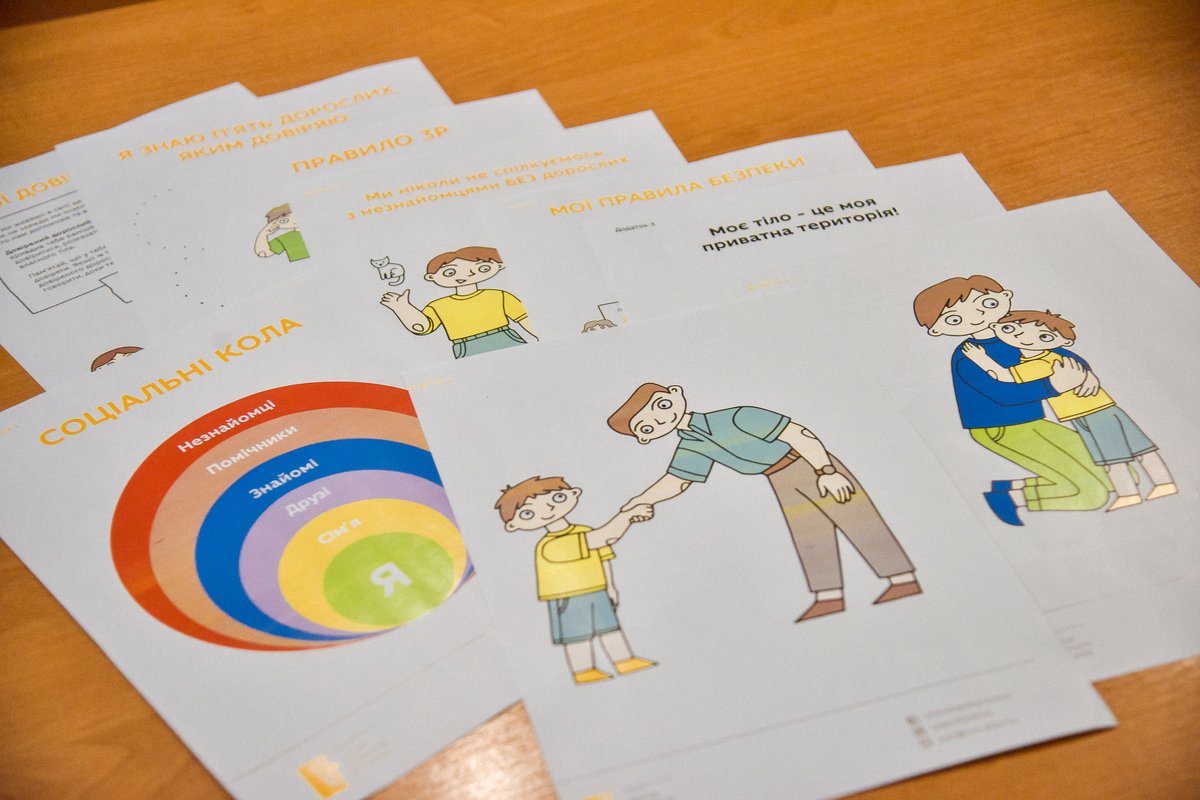
Photos were provided by specialists who participated in the testing of the manual with the consent of the children's parents.
